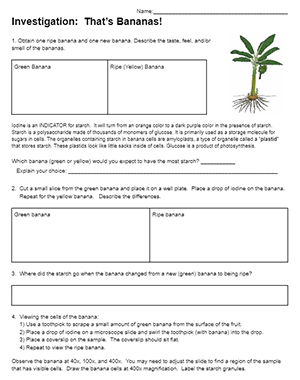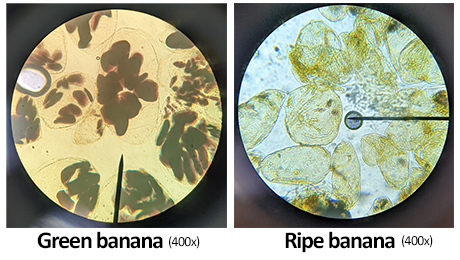
What is the difference between a ripe banana and a green banana? Students investigate by examining banana tissue under the microscope. When stained with iodine, plastids within the banana cells that contain starch will turn dark purple. Cells in the ripe banana have fewer starch granules because they are converted to sugars as the banana ripens, which give it a sweet taste.
The cells are fairly easy to see even at low power (100x). At 400x, you can even count the number of starch granules within cell plastids. You could potentially revise this lab to include quantitative data.
The investigation includes instructions for taking a banana sample with a toothpick. Then, swirl the toothpick in a drop of iodine and add a coverslip. Cells are large and easy to see even with the scanning objective (40x). Students should spread the sample out on the slide so that individual cells are visible.

Once students have viewed the cells, they sketch them and answer questions. Questions will lead them to the conclusion that green bananas have more starch granules than ripe bananas.
In Part II, students investigate the skin of a red pepper. Here, they can see the orange chromoplasts which give the pepper its color.
The final synthesis requires students to examine data about ethylene production and pulp firmness.

